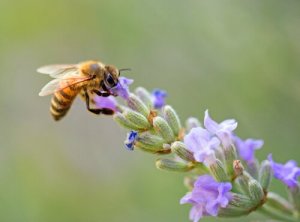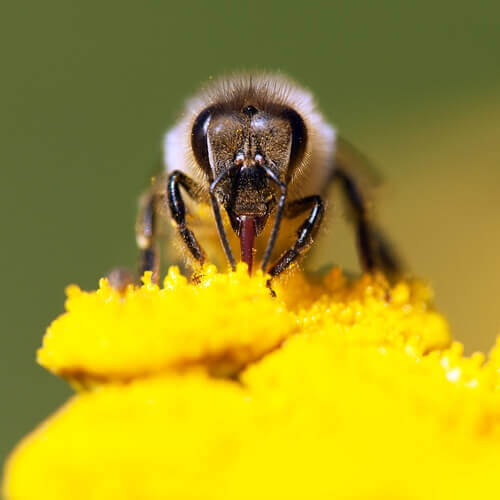The Life of Bees - Characteristics and Peculiarities

There are many amazing facts about the life of bees that few of us know. Let’s start by saying that some believe these insects are the most important living beings for human life. This is because 90% of the crops that we consume are pollinated by these beautiful flying bugs.
We’ve known at least since 2010 that bees can distinguish facial features. Scientists discovered through some tests that they can recognize bees who belong to their own hive. This characteristic is amazing as their brain has less than one million brain cells. (Some believe there’s a correlation between intellectual capacity and cerebrum size.)
They don’t just recognize their peers but also human faces. Apparently, their brain is similar to ours in that regard. They can see the way we do and are capable of grouping facial features to tell a person apart from another.
Bees and individualism

For example, they’re intelligent and capable of making individual decisions. Everyone has a job inside the hive, but they display an independent behavior when they’re outside, according to those who study them. Their courage and way of confronting difficulties differ from specimen to specimen. As you can see, each bee has a personality of its own.
The life of bees – they can do math
This is perhaps one of the most amazing facts about bees. According to some tests, bees can understand zero and do basic math. In fact, a new study shows they can also connect symbols to quantities.
Some researchers trained honeybees to match a character to a specific amount and the bugs learned that a symbol represents a numerical amount pretty fast.
But, what would a bee usually count? Well, any competing animals and food!
Queen bees live longer
Queen bees are special and above the rest of the female workers because they can procreate. Their makeup and care to which they’re subjected both allow them to have a life that may last up to six years. However, their average lifespan is three years.
In contrast, worker bees may live for a maximum of three months. They’re exposed to all sorts of danger when they leave the hive to fly and get pollen. The social hierarchy is quite evident within their communities.
Bee venom as a cure
When a bee stings, it releases a venom that promotes swelling of the human skin tissue. It’s very painful, indeed; however, it’s commonly used in the treatment of at least 500 human diseases. Its name: apitoxin.
The remedies for most respiratory and bone diseases have this substance in their ingredients. In addition, it’s also a part of some treatments for conditions as complex as Alzheimer’s. Some even believe that the basis for the possible cure of AIDS lies in the stingers of these wonderful insects.
The life of bees – epidemic control
When fungi get a hold of a hive the worker bees spread large amounts of propolis around it. This is an antibiotic they create from the resins of trees and plants.
They also remove any contaminated larvae as an extra measure. Isn’t it amazing how seemingly “basic” creatures take action against epidemics within their society?
The queen bee has many drones
It’s true that a chosen drone must be very handsome and have terrific DNA and other reproductive qualities to be suitable for procreation. However, a queen bee doesn’t only choose one – she chooses many.
There are species of bees that have up to 63 reproductive pairs. In addition, some believe that the purpose of their “promiscuity” (a concept invented by humans) has to do with genetic diversity which makes them more resistant to disease. Their sexual diversity is directly correlated to the quality of protection of their hive.
There are still many more amazing facts and questions to answer about bees. Caring for them should be one of our top priorities. In the meantime, we can continue to enjoy the goodies they produce and their displays of intelligence and organization.
All cited sources were thoroughly reviewed by our team to ensure their quality, reliability, currency, and validity. The bibliography of this article was considered reliable and of academic or scientific accuracy.
- Apolo.entomologica.es. La abeja doméstica. Extraído de: http://apolo.entomologica.es/cont/materiales/Triptico_Apis_mellifera_nivel2.pdf
- RAFAEL VALDERRAMA HERNÁNDEZ. 2003 Aspectos toxinológicos y biomédicos del veneno de las abejas Apis mellifera. Extraído de: http://www.scielo.org.co/pdf/iat/v16n3/v16n3a3.pdf
This text is provided for informational purposes only and does not replace consultation with a professional. If in doubt, consult your specialist.